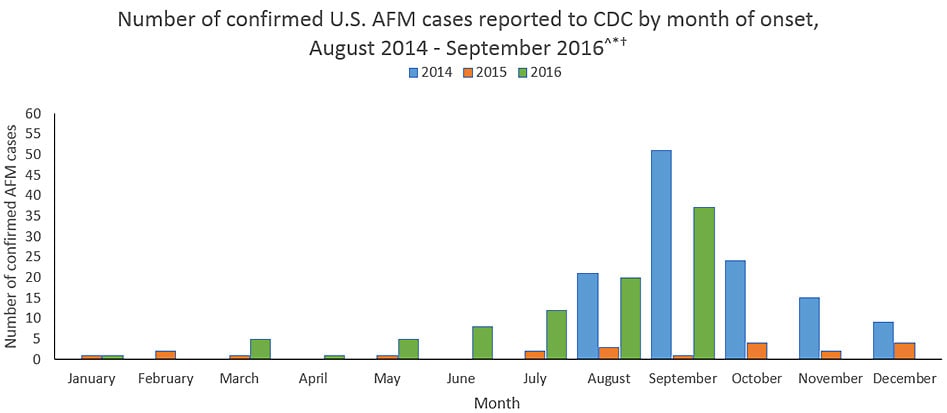Archive for the ‘Kids-Infants’ Category
Diagnosing malnutrition in kids
Thursday, January 12th, 2017“….Making a diagnosis of severe malnutrition in a child six months to five years is fairly simple. A health worker, volunteer or even a parent uses a special plastic bracelet to measure the circumference of the child’s mid-upper arm. A measurement less than 115 millimeters, about 4.5 inches, means the child is severely malnourished. Measures of 115 mm to 126 mm, or about 4.5 inches to 5 inches, mean the child is moderately malnourished. MSF is seeking to treat more children at this stage to help them avoid slipping into severe malnutrition.
When people are severely malnourished, the body begins to essentially feed off its own muscles and tissue, and the person loses all desire to eat. At that point, children should be hospitalized and given special therapeutic milk, rich in carbohydrates but low in some nutrients that a severely malnourished child initially has trouble tolerating, like protein, sodium and fats. When they’re stabilized, the child is given more protein and fats in the form of ready-to-use packets of a dense, peanut-based food, and sent home….”
Some 2.6 million Nigerians have been displaced since 2009 due to Boko Haram attacks and these displaced persons have largely gone to Maiduguri, the capital of Borno State, and to neighboring countries including Chad, Cameroon and Niger. In those 4 countries, an estimated 480,000 children suffer from acute severe malnutrition.
Thursday, January 12th, 2017“….MSF is starting to use what Hanson calls “precious access” to children and families. When they see families to treat disease or provide vaccinations, it’s also a perfect time to distribute food. In the last three months of 2016, MSF — working with U.N., government and other humanitarian organizations — distributed enough food to feed 26,000 families for two weeks…..”
Adjusted mortality in children following emergency abdominal surgery may be as high as 7 times greater in low-HDI and middle-HDI countries compared with high-HDI countries.
Thursday, December 15th, 201612/14/2012: A 20-year-old man shoots and kills his mother at their Newtown, Connecticut, home then drives to nearby Sandy Hook Elementary School, where he kills 20 first graders and six school employees before turning a gun on himself.
Thursday, December 15th, 2016On December 1, 1958 a fire broke out at Our Lady of Angels in Chicago, Illinois, claiming the lives of 92 children and 3 nuns
Thursday, December 1st, 2016At least six children were killed and 23 injured in a school bus crash in Chattanooga, Tennessee
Tuesday, November 22nd, 2016Nigeria: WHO and health partners helped vaccinate more than 10 000 children against measles in 2 days in internally displaced persons (IDP) camps in the conflict-affected Borno State.
Friday, November 11th, 2016- “…Since 6 June 2016, health clinics in IDP camps in Borno State have seen increasing numbers of measles cases. From early September until late October, 744 suspected cases of measles, and 2 deaths, were reported from WHO-established EWARS reporting sites. The majority of these children had never been vaccinated against measles and most of them were aged less than 5 years….”
Key facts
- Measles is one of the leading causes of death among young children even though a safe and cost-effective vaccine is available.
- In 2015, there were 134 200 measles deaths globally – about 367 deaths every day or 15 deaths every hour.
- Measles vaccination resulted in a 79% drop in measles deaths between 2000 and 2015 worldwide.
- In 2015, about 85% of the world’s children received one dose of measles vaccine by their first birthday through routine health services – up from 73% in 2000.
- During 2000-2015, measles vaccination prevented an estimated 20.3 million deaths making measles vaccine one of the best buys in public health.
The global burden of preventable infectious diseases in children : A 5-step plan
Sunday, November 6th, 2016
Acute flaccid myelitis (AFM) in the USA: As of 9/30/16, 89 AFM cases have been confirmed in 33 states, mostly in children.
Thursday, November 3rd, 2016
At a Glance
- CDC is concerned about AFM, a serious illness that we do not know the cause of or how to prevent it.
- CDC is investigating the increase in AFM in 2016. As of September 2016, 89 people in 33 states were confirmed to have AFM.
- Even with an increase in cases in 2016, AFM remains a very rare disease (less than one in a million).
- While the AFM case count for 2016 is less than the 2014 case count, CDC is concerned about the increase in cases in recent months.
- CDC is intensifying efforts(http://www.cdc.gov/acute-flaccid-myelitis/afm-surveillance.html#cdc) to understand the cause and risk factors of AFM.
- It’s always important to practice disease prevention steps, like washing your hands, staying up-to-date on vaccines, and protecting yourself from mosquito bites.
Acute flaccid myelitis (AFM) is a rare illness that anyone can get. It affects a person’s nervous system, specifically the spinal cord. AFM can result from a variety of causes, including viral infections.
Beginning in August 2014, CDC received an increase in reports of people across the United States with AFM for which no cause could be found. Since then, CDC has been actively investigating this illness. We continue to receive reports of sporadic cases of AFM. From January 1 to September 30, 2016, a total of 89 people in 33 states across the country were confirmed to have AFM.

Updated November 1, 2016
^ Cases reported as of October 31, 2016 with onset of illness through September 30, 2016. The case counts are subject to change. CDC updates the case counts monthly with a one month lag to allow the time needed for case review.
* The data shown from August 2014 to July 2015 are based on the AFM investigation case definition: onset of acute limb weakness on or after August 1, 2014, and a magnetic resonance image (MRI) showing a spinal cord lesion largely restricted to gray matter in a patient age ≤21 years.
† The data shown from August 2015 to present are based on a revised AFM case definition adopted by CSTE: acute onset of focal limb weakness and an MRI showing spinal cord lesion largely restricted to gray matter and spanning one or more spinal segments, regardless of age.
For more information on AFM case definitions, visit the Case Definitions(http://www.cdc.gov/acute-flaccid-myelitis/hcp/case-definition.html) page.
What This Graph Shows
- From January 1 to September 30, 2016, 89 people were confirmed to have AFM. (Note: The cases occurred in 33 states across the U.S.)
- In 2015, 21 people were confirmed to have AFM. (Note: The cases occurred in 16 states across the U.S.)
- From August to December 2014, 120 people were confirmed to have AFM. (Note: The cases occurred in 34 states across the U.S.)
- The case counts represent only those cases reported to and confirmed by CDC.
- There has been an increase in reports of confirmed AFM cases in 2016 compared with 2015 (21 cases in 16 states).
The graph shows reports of cases confirmed by CDC as of October 31, 2016 with onset of illness through September 30, 2016.
It is currently difficult to interpret trends of the AFM data since reporting only started in 2014 and is voluntary in most states. Also, since AFM reporting is relatively new, there may initially be more variability in the data from year to year making it difficult to interpret or compare case counts between years. One possible reason for the differences in annual reporting is more awareness among and reporting by healthcare providers and health departments.
To protect patient confidentiality, CDC is not specifying the states with confirmed AFM cases. We defer to the states to release information as they choose.
Number of confirmed AFM cases by year of illness onset, 2014-2016
| Year | Number confirmed cases | Number of states reporting confirmed cases |
|---|---|---|
| 2014 (Aug-Dec) | 120 | 34 |
| 2015 | 21 | 16 |
| 2016* (Jan-Sept) | 89 | 33 |
*The case counts are subject to change.
What We Know
What we know about the AFM cases reported since August 2014:
- Most patients are children.
- The patients’ symptoms have been most similar to those caused by certain viruses, including poliovirus, non-polio enteroviruses, adenoviruses, and West Nile virus. See a list of viruses associated with AFM(http://www.cdc.gov/acute-flaccid-myelitis/about-afm.html#germs).
- Enteroviruses can cause neurologic illness, including meningitis. However, more severe disease, such as encephalitis and AFM, is not common. Rather, they most commonly cause mild illness.
- CDC has tested many different specimens from the patients for a wide range of pathogens (germs) that can cause AFM. To date, we have not consistently detected a pathogen (germ) in the patients’ spinal fluid; a pathogen detected in the spinal fluid would be good evidence to indicate the cause of AFM since this illness affects the spinal cord.
- The increase in AFM cases in 2014 coincided with a national outbreak of severe respiratory illness among people caused by enterovirus D68 (EV-D68). Among the people with AFM, CDC did not consistently detect EV-D68 in the specimens collected from them. In 2015 there were no cases of EV-D68 detected and so far in 2016, only limited sporadic cases of EV-D68(http://www.cdc.gov/non-polio-enterovirus/about/ev-d68.html) have been detected in the United States.
What We Don’t Know
What we don’t know about the AFM cases reported since August 2014:
- Despite extensive testing, CDC does not yet know the cause of the AFM cases.
- It is unclear what pathogen (germ) or immune response is causing the disruption of signals sent from the nervous system to the muscles causing weakness in the arms and legs.
- CDC has not yet determined who is at higher risk for developing AFM, or the reasons why they may be at higher risk.
See Prevention(http://www.cdc.gov/acute-flaccid-myelitis/about-afm.html#prevention) for information about how to protect your family from viral infections that may cause AFM.
What CDC Is Doing
CDC is actively investigating the AFM cases and monitoring disease activity. We are working closely with healthcare providers and state and local health departments to increase awareness and reporting for AFM, and investigate the AFM cases, risk factors, and possible causes of this illness.
CDC activities include:
- encouraging healthcare providers to be vigilant for AFM among their patients, and to report suspected cases to their health departments
- verifying reports of suspected AFM cases submitted by health departments using a case definition adopted by the Council of State and Territorial Epidemiologists (CSTE)
- testing specimens, including stool, blood, respiratory and cerebrospinal fluid, from people confirmed to have AFM
- working with clinicians and state and local health departments to investigate and better understand the AFM cases, including potential causes and how often the illness occurs
- providing new and updated information to clinicians, health departments, policymakers, the public, and partners in various formats, such as the Morbidity and Mortality Weekly Report, the AFM website, and CDC social media
- pursuing an approach that uses multiple research methods to further explore the potential association of AFM with possible causes as well as risk factors for AFM. This includes collaborating with several medical institutions to review MRI scans of people from the past 10 years to determine how many AFM cases occurred before 2014.
For more information, see COCA Clinical Reminder (August 27, 2015) – Notice to Clinicians: Continued Vigilance Urged for Cases of Acute Flaccid Myelitis.
The 2014 investigation summary is available here: Acute Flaccid Myelitis in the United States—August – December 2014: Results of Nation-Wide Surveillance.
For more information on AFM surveillance, see the CSTE Standardized Case Definition for Acute Flaccid Myelitis.
Estimate: About a fifth of all mine workers in India are children
Tuesday, July 12th, 2016
“….Despite a law that bans child labour, India has 5.7 million child workers aged between five and 17…..”



